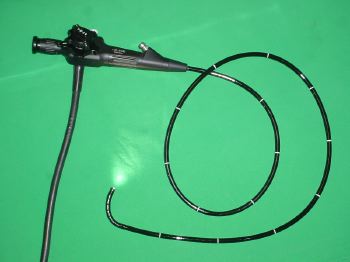endoscopes and endoscopy

Endoscopy is a way of looking inside the body using a flexible tube that
has a small camera on the end of it. This instrument is called an endoscope.
There are many types of endoscopes, each named according to the organ or
area it is used to examine. For example:
An endoscope is passed through a natural body opening or a small incision. For example, a laparoscope is inserted through a small surgical cut in the pelvic or belly area. In men, a urinary tract endoscope is passed through the opening of the urethra. A gastrointestinal endoscope may be inserted through the mouth or anus. An ultrasound probe can be added to a gastrointestinal endoscope. This is called an endoscopic ultrasound. Depending on the area of interest, this device can also be passed through the mouth or anus.
Small instruments can be inserted through an endoscope and used to take samples of (biopsy) suspicious tissues.
There are many different reasons to perform an endoscopy. For example, a doctor may order an endoscope if a patient has bleeding, pain, difficulty swallowing, or a change in bowel habits. Colonoscopy is also done to screen for colon polyps and colon cancer. (See also sigmoidoscopy.) Endoscopes also can be used to treat certain diseases or conditions. For example, tumors can be removed or bleeding from lesions can be stopped.


